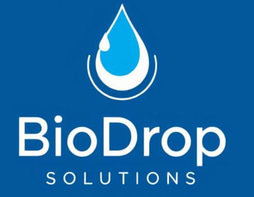Tear-Based Diagnostics, Reinvented
At BioDrop, we’re building a new class of diagnostic tools using a body fluid the world has overlooked — tears. Our patented contact lenses are designed to gently collect microRNA-rich tear fluid, opening a new pathway for early disease detection.
Our soft, biocompatible lenses are designed for single use and require no clinical oversight. They painlessly gather tear fluid while being worn, and preserve critical microRNA biomarkers — the tiny genetic regulators linked to cancer, brain health, and more.
Unlike invasive tests like CSF taps or surgical biopsies, BioDrop offers:
A non-invasive sample method
High-quality molecular data from tear fluid
Daily-wear usability, even for people with low tear production




Why Tears?
Tears are directly connected to the bloodstream through the lacrimal system and are rich in diagnostic content. Compared to blood, they offer:
Higher concentrations of certain microRNAs
A stable pH environment ideal for preserving fragile molecules
A safer, simpler collection process


Contact Lenses That Collect Genetic Data
A Full System, Not Just a Lens
BioDrop is developing a complete sample-to-answer platform, including:
Hydrogel lenses embedded with PEG-based microRNA preservation films
On-chip microRNA extraction and purification tools
A next-generation AI analysis engine for biomarker discovery
These systems are designed to support early, accurate glioma detection — and can scale to other diseases in future development cycles.

Understanding Tear-Based Liquid Biopsy
The collection of tears is a promising alternative to the more traditional methods of gathering blood or cerebrospinal fluid for brain cancer diagnostics. This non-invasive technique poses no risk to patients, greatly enhancing its appeal. By utilizing tear samples, healthcare professionals can easily incorporate this method into clinical practice, offering a safer and more comfortable option for patients while still obtaining valuable diagnostic information.
Of importance, the apparent proximity of lacrimal and meibomian glands to the brain gives tears a distinct advantage, making it an ideal fluid for evaluating biomarkers for various brain pathologies. The unique properties of tear fluid serve as the foundation for my innovative approach to tear-based liquid biopsy. Research indicates that tears are a complex biofluid containing various molecular components. Of note, ongoing efforts exist to use liquid biopsy biomarker analysis for the early diagnosis and non-invasive monitoring of brain tumors. Some research groups are developing a classifier based on tear proteins that can distinguish brain cancer patients from healthy individuals.
While proteomics assays provide valuable insights, they are often time-consuming and costly. In addition, in cancer research, proteomics is less informative than genomics, transcriptomics, and metabolic studies. Thus, exploring alternative methods may provide more effective and affordable solutions.
MicroRNAs are small noncoding sequences of ≈18-24 nucleotides regulating numerous cellular functions such as proliferation, differentiation, senescence, and apoptosis. In fact, about 60% of the human protein-coding genes are modulated by miRNAs. Due to the significant role of miRNA in physiology, abnormal expression of miRNA is closely linked to cancer development.
Of importance, tear fluid has the highest number of detectable miRNA species (315) compared to serum (309). The tear film is 3-10 μL volume, measures three μm thick, and secretes at the rate of 1-2 μL/min. Tears create an ideal environment to detect various biomarkers, including microRNA. The tear fluid maintains stability at pH 7.45, which helps preserve microRNA.
Accordingly, tear-based testing possesses several advantages over traditional blood tests:
It is non-invasive.
It is quick and straightforward.
No specially trained medical personnel or equipment are needed.
Biomarkers appear in higher concentrations in tears than in blood.
Tears constantly exchange with blood plasma through lacrimal gland filtration, which makes them excellent indicators of systemic conditions. They can serve in detecting various disease biomarkers, including cancer indicators. Notably, profiling the expression of miRNAs in various human pathological conditions is a rapidly growing field. Detecting and quantifying various microRNA species in cancer patients' tissues and blood serum has significant diagnostic and prognostic importance. Tear-based liquid biopsy shows promise for glioma diagnosis. In addition, microRNAs can also be utilized to predict an individual patient's response to therapy.
What Makes It Work?
Soft, smart lens technology designed for microRNA preservation
PEG films that stabilize pH and protect RNA quality
AI + NGS-powered analysis, extracting real clinical signals from small fluid volumes
What Makes It Work?
We’re currently preparing for pilot manufacturing, early-stage validation, and grant-supported clinical studies. Our goal is to deliver the first tear-based test for brain tumors and pave the way for expanded diagnostic use.
